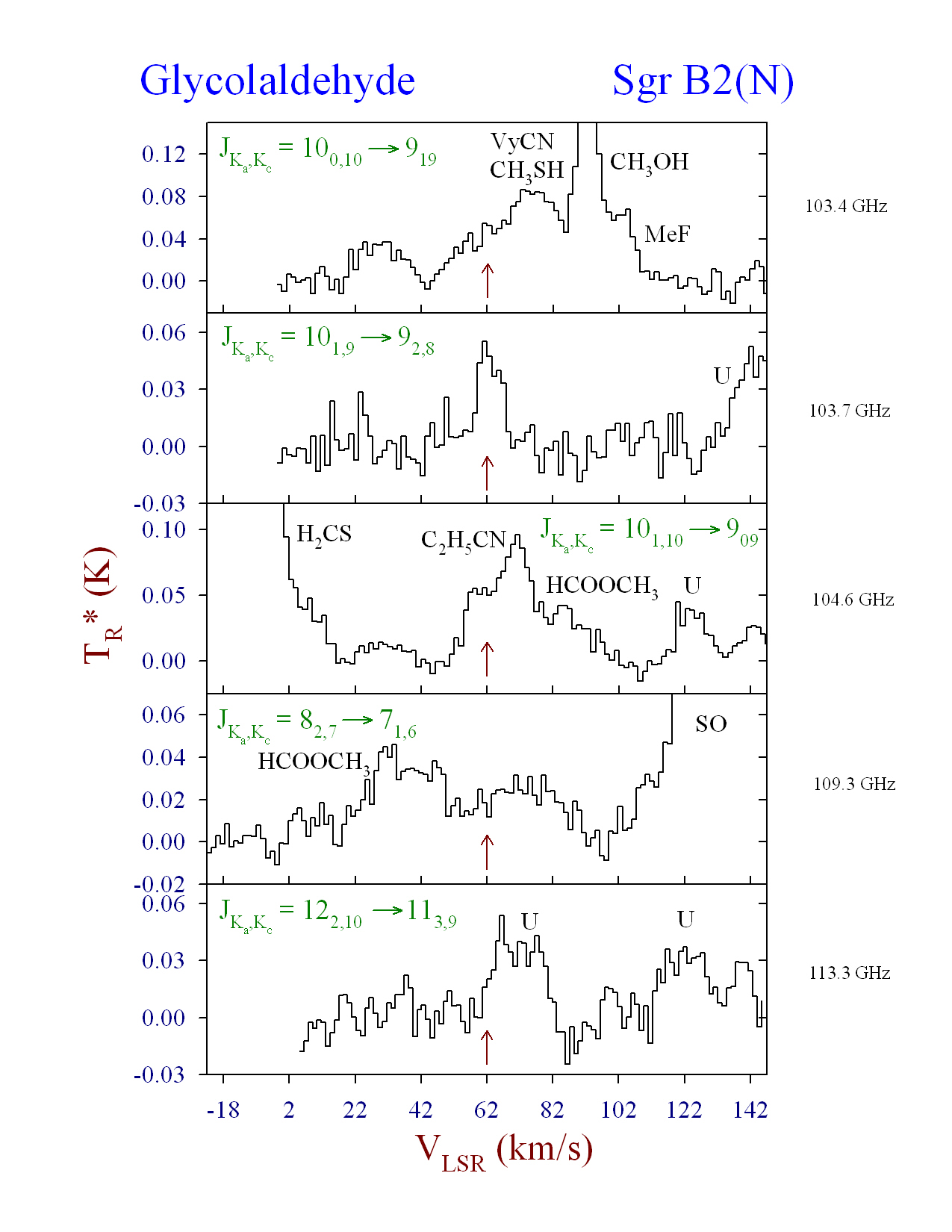|
|
|
2 and 3 mm Survey
of Glycolaldehyde
in Sagittarius B2(N)
An
intensive study of glycolaldehyde (CH2OHCHO) has been
conducted in the 2 and 3 mm windows towards Sgr B2(N) using the Arizona
Radio Observatory 12m telescope. Forty favorable transitions of
this species were observed in the range 68 – 169 GHz. Emission on
the 20 – 70 mK level was detected at frequencies of 37 of these lines,
all arising from the Ka = 0, 1, and 2 ladders. The
“missing” features were among the weakest sought, and all originate in
the less populated Ka =3 levels. Twenty
percent of the detected transitions are distinct, individual lines, and
one third are partially blended but still resolvable from emission of
other molecules. The remaining lines are either completely
contaminated by emission from abundant molecules such as HCOOCH3
or are totally blended with equivalently weak features. The
resolved transitions indicate an LSR velocity of VLSR = 61.7
± 1.5 km/s and a line width of V1/2
= 7.8 ± 1.8 km/s, parameters characteristic of other organic
species such as acetic acid and acetone in Sgr B2(N). A
rotational diagram analysis yields a total column density of 5.9 x 1013
cm-2 for glycolaldehyde and a rotational
temperature of 36 K, assuming an extended source (qs ≥ 90")
distribution. This density suggests a fractional abundance of f = 5.9 x 10-11,
relative to molecular hydrogen. Observations of 2 and 3 mm
transitions of formaldehyde towards the same position and an analysis
of the line profiles suggest that H2CO and CH2OHCHO
arise from the same gas in Sgr B2(N). Their abundance ratio was
determined to be CH2OHCHO/H2CO
~ 1/14. Therefore, H2CO may function as the precursor
to glycolaldehyde in a gas-phase “formose” reaction, perhaps with a
Nazarov-type intermediate. These observations, combined with the
past results of Hollis et al. (2000), provide solid evidence for the
presence of glycolaldehyde in the interstellar medium. This study
suggests that an extensive, self-consistent data set is absolutely
necessary to confirm natural product-type species in interstellar gas.
Below, Spectra of Glycolaldehyde at 2 and 3mm taken
with the Kitt Peak 12m telescope.
|


